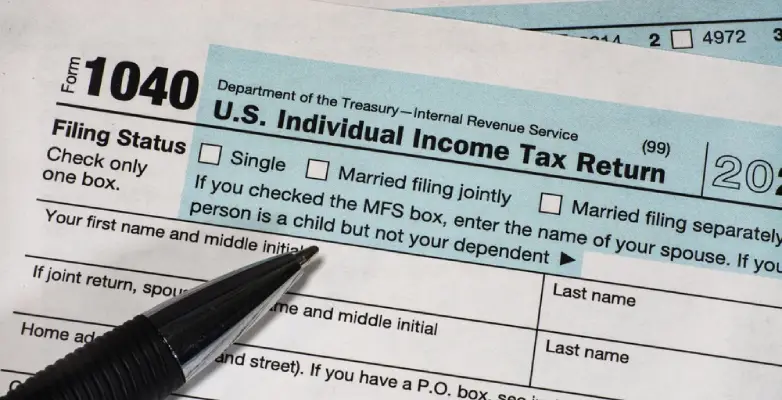Schedule K-1 is a tax document provided annually by the Internal Revenue Service (IRS) to individuals involved in business partnerships. Its primary function is to outline and communicate each partner’s respective portion of the partnership’s earnings, losses, deductions, and credits for tax reporting purposes. In essence, it plays a role analogous to that of Form 1099, which reports income from sources like dividends, interest, or securities transactions.
Beyond business partnerships, Schedule K-1 is also issued to individuals who have invested in limited partnerships (LPs) and select exchange-traded funds (ETFs), particularly those specializing in commodities.
Furthermore, this tax document finds application in other scenarios. Shareholders of S corporations, which are companies with fewer than 100 stockholders and are taxed as partnerships, receive Schedule K-1 forms. Additionally, estates and trusts that have distributed income to beneficiaries are required to issue and file Schedule K-1s as part of the tax reporting process.
Table of Content
- 1 Purpose of Schedule K-1 Tax Form
- 2 Varieties of Schedule K-1 Forms
- 3 Understanding K1 Form
- 4 Summing Up
- 5 Frequently Asked Questions
- 5.1 What is a Schedule K-1 tax form, and who uses it?
- 5.2 Do I need to file a Schedule K-1 form with my tax return?
- 5.3 What happens if I fail to report the information from my Schedule K-1 on my tax return?
- 5.4 What are the different types of Schedule K-1 forms?
- 5.5 When should I expect to receive my Schedule K-1 form?
- 5.6 Can Schedule K-1 income impact my tax liability beyond the standard income tax?
Purpose of Schedule K-1 Tax Form
Schedule K-1 serves as a crucial document for partnerships, helping partners navigate their share of income, deductions, credits, and related items. It’s a document you should retain for your personal records, and generally, you don’t need to include it when filing your tax return, unless specifically required (refer to the instructions for Code O on Backup Withholding for exceptions). The partnership, on its part, submits a copy of Schedule K-1 (IRS Form 1065) to the IRS.
For privacy and security, Schedule K-1 may display only the last four digits of your identifying number, such as your Social Security Number (SSN). However, the partnership has already provided your complete identifying number to the IRS.
While the partnership itself typically isn’t subject to income tax, you, as a partner, may bear tax responsibilities for your share of the partnership income, whether it was distributed to you. If a tax return is mandated, you should include your share in it. To assist you in this process, these instructions offer guidance on how to report the details presented on Schedule K-1 on your tax return.
It’s important to note that the amount of loss and deduction you can claim on your tax return might differ from the figure reported on Schedule K-1. Partners are responsible for assessing and applying any relevant limitations in this regard.
Who Submits Schedule K-1?
The responsibility for submitting Schedule K-1 primarily rests with the partnership that issues these forms to its partners. These forms are typically forwarded to the IRS alongside Form 1065, which serves as the partnership’s tax return.
Generally, partners themselves do not file Schedule K-1 with the IRS. Instead, they utilize the information contained in these forms to prepare their own individual income tax returns.
Key Aspects of Schedule K-1 Tax Form
Consideration of Partnership Agreements
A partnership is essentially a contract involving two or more individuals who come together as partners to collaborate in business. The terms and conditions governing this business arrangement are documented in a partnership agreement. Within a partnership, there’s typically at least one general partner (GP) who actively manages the partnership.
General partners bear personal liability for their actions as partners and are accountable for the activities of other GPs within the partnership. In contrast, limited partners have liability limited to their capital contributions they aren’t held responsible for the partnership’s debts beyond their investment. The specific profit-sharing arrangements outlined in the partnership agreement significantly influence the information provided on Schedule K-1.
Basis Calculation
Schedule K-1 necessitates that the partnership keeps a record of each partner’s basis in the partnership. Here, “basis” refers to a partner’s investment or ownership stake in the business. A partner’s basis is augmented by their capital contributions and their share of income. Conversely, it diminishes by their share of losses and any withdrawals they’ve made.
The basis calculation carries significance because when the basis reaches zero, any additional payments to the partner are subject to taxation as ordinary income. This basis calculation is outlined on Schedule K-1 in the partner’s capital account analysis section.
Income Reporting
Schedule K-1 encompasses various types of income that a partner may earn, such as rental income from the partnership’s real estate holdings, income from bond interest, and stock dividends. In many cases, partnership agreements include guaranteed payments to compensate general partners for their substantial time and effort invested in running the business.
Furthermore, a partnership can generate income from royalties and capital gains or losses. These income items are allocated to each partner’s Schedule K-1 based on the terms stipulated in the partnership agreement.
Underlying Framework
In the United States tax code, a concept known as pass-through taxation is applied in certain cases. This concept shifts the tax burden from the entity, like a partnership, to the individuals who hold a stake in it. Consequently, Schedule K-1 is crafted by a partnership to detail each partner’s financial involvement in the business. A K-1 delineates the distribution of returns among partners, based on their respective capital contributions. A partner’s capital stake can increase through contributions and their share of profits, while it may decrease due to their share of losses and withdrawals. Three versions of Schedule K-1 are available, tailored to partners, shareholders, and beneficiaries, and can be obtained from the IRS website. S-Corporations also submit K-1s, along with Form 1120S, while estates or trusts file K-1s in conjunction with Form 1041.
Unique Considerations in Filing Schedule K-1
Although Schedule K-1 itself is not filed with an individual partner’s tax return, it plays a vital role in helping partners accurately determine their annual income for tax reporting purposes. Regrettably, Schedule K-1 is notorious for often arriving late. It is supposed to be received by partners by March 15 (or the 15th day of the third month after the entity’s tax year concludes). In practice, it is often one of the last tax documents to reach taxpayers.
Several factors contribute to this delay, including the complexity of calculating partners’ shares and the necessity of individually preparing K-1s for each partner. It’s worth noting that prior to IRS rule changes in 2017, partners didn’t have to receive K-1s until April 15, making the process even more prolonged.
Adding to the inconvenience, Schedule K-1 can be intricate, necessitating multiple entries on a taxpayer’s federal return, including entries on Schedule A, Schedule B, and Schedule D.
This is because Schedule K-1 can encompass various types of income, such as rental income from a partnership’s real estate holdings, as well as income from bond interest and stock dividends. It’s important to note that K-1 income can potentially trigger the alternative minimum tax.
Varieties of Schedule K-1 Forms
There exist three distinct K-1 forms, each designated for a different type of entity but issued to taxpayers for a common purpose: reporting income, deductions, credits, and other financial details on their tax returns.
- Partnership K-1 Form
- Partnership-specific K-1s are submitted to the IRS along with the partnership’s tax return (Form 1065). They are also furnished to each partner so they can incorporate the information into their individual income tax returns.
- S-Corporation K-1 Form
- S-Corporations issue K-1 forms to shareholders. When the corporation files its annual tax return (Form 1120-S), it includes the K-1 information regarding each shareholder’s portion of income, losses, deductions, and credits.
- Estate or Trust K-1 Form
- Estates and trusts issue K-1 forms to beneficiaries, allowing them to report the income they’ve received on their personal income tax returns. Subsequently, the estate or trust files its own tax return, incorporating K-1 information using Form 1041.
Understanding K1 Form
K1, commonly known as Schedule K-1, is an IRS form distributed by partnerships, S-corporations, estates, or trusts. These forms are provided to partners, shareholders, and beneficiaries, respectively, offering comprehensive financial data encompassing income, deductions, credits, and more. This information is essential for these individuals to accurately complete and file their personal income tax returns. The entities themselves, i.e., the partnership, S-corporation, or estate/trust, submit these K1s along with their annual tax returns.
Who Requires Filing a Schedule K1?
Typically, the taxpayer is not expected to submit the K-1 form to the IRS. Instead, the entity that issued it undertakes this responsibility, along with the filing of its own tax return. Taxpayers simply utilize the data provided in the K-1 to complete their individual tax return forms. It is important to ensure that the financial information on the K-1 issued to the taxpayer aligns accurately with what is reported on their tax return. The IRS cross-references this data with the entity’s tax return to verify consistency.
How to Complete a Schedule K-1 Form?
Filling out a Schedule K-1 involves three main sections:
Part I: Entity Information
In this section, you’ll find details about the entity that’s issuing the K-1. This includes the entity’s Employer Identification Number (EIN), address, where the IRS received its tax return, and whether the entity is publicly traded or not.
Part II: Recipient Details
This part delves into specifics about the person receiving the K-1, whether they are a partner, shareholder, or beneficiary. It requires information like their Social Security Number (SSN), address, role within the entity, details about their gains and losses, and information about the capital and assets they contributed to the partnership throughout the year.
The third section focuses on financial aspects related to the entity, including income details, tax deductions, and credits claimed. Here, you’ll report your share of income, deductions, credits, and other financial items related to the entity.
Summing Up
Schedule K-1 is an essential IRS form employed by partnerships, S-corporations, estates, and trusts to report the income, deductions, and credits allocated to partners, shareholders, and beneficiaries within the tax year. For individual taxpayers, the process involves transferring the financial data from their K-1s onto their tax returns. Importantly, it is not customary to include the physical K-1 form when submitting their tax returns to the IRS.
If you encounter any further questions or concerns related to Schedule K-1 or any other tax-related matters, don’t hesitate to seek assistance from our experts. We’re here to help!
Frequently Asked Questions
What is a Schedule K-1 tax form, and who uses it?
A Schedule K-1 is an IRS tax form used by various entities, including partnerships, S-Corporations, estates, and trusts, to report financial information to their partners, shareholders, or beneficiaries. It outlines income, deductions, credits, and other details that individuals need for their personal income tax returns.
Do I need to file a Schedule K-1 form with my tax return?
Typically, no. If you receive a Schedule K-1 from an entity in which you have an interest, you use the information provided on the K-1 to complete your personal tax return. You do not attach the K-1 form itself when filing your taxes with the IRS.
What happens if I fail to report the information from my Schedule K-1 on my tax return?
It’s crucial to accurately report the data from your Schedule K-1 on your personal tax return. The entity that issued the K-1 will also file the same information with the IRS. The IRS cross-references this data to ensure consistency in your reported income and deductions. Failing to do so can result in tax discrepancies and potential penalties.
What are the different types of Schedule K-1 forms?
There are three primary types of Schedule K-1 forms: one for partnerships, one for S-Corporations, and another for estates and trusts. Each form serves the same purpose but corresponds to a different type of entity, and the recipients are partners, shareholders, or beneficiaries, respectively.
When should I expect to receive my Schedule K-1 form?
Schedule K-1s are typically issued by entities in the first few months of the year, following the close of the tax year. The deadline for entities to send K-1s to recipients is usually March 15, or the 15th day of the third month after the entity’s tax year ends. However, they can sometimes arrive later due to the complexity of calculations.
Can Schedule K-1 income impact my tax liability beyond the standard income tax?
Yes, income reported on a Schedule K-1 can have broader tax implications. Depending on the type of income, it may affect other tax calculations, such as the alternative minimum tax (AMT). Therefore, it’s essential to understand the nature of the income reported on your K-1 and how it might influence your overall tax situation.




